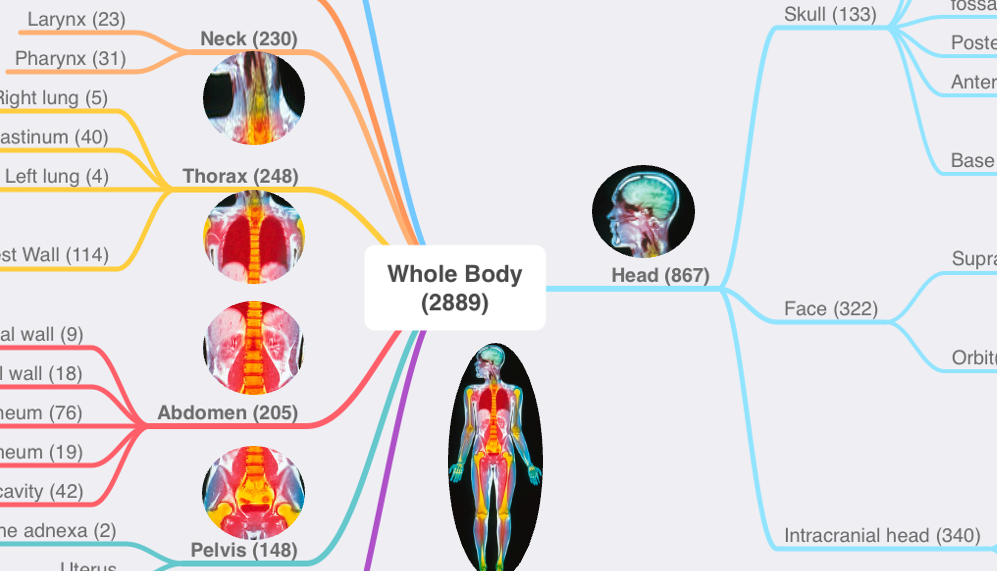Introduction
Standard identifiers for discrete anatomic locations would enable numerous levels of interoperability if applied broadly. However, attempts to use existing ontologies containing anatomic terms—such as Radlex or SNOMED-CT—are not well suited to underpinning such interoperability:
- Lack of numerous desired terms
- Too many unnecessary/degenerate terms
- Limited anatomic organization
We are curating a subset of anatomic concepts from existing ontologies and shaping them into a usable collection of anatomic identifiers for informatics interoperability.
Our Approach
Starting with a set of Radlex terms that had been previously recognized in radiology reports, a subset of used and useful anatomic terms was identified. For each term, its location in an anatomic hierarchy was identified, references to other ontologies were recognized, and laterality and sex phenotype information was associated.
Current Features
- Curated set of 2890 nodes, primarily identified by RadLex ontology IDs.
- Complete-ish: contains almost all clinically used anatomic terms
- Non-degenerate: no uncertainty as to which node represents a structure
- Organized into a directed, rooted tree hierarchy, starting from the whole body and ramifying through body regions.
- For all sided terms, unsided and contralateral versions of the term were identified.
- Identifies structures specific to male or female sex phenotypes
- Available as a single JSON file (see Code page for more details)
- Companion libraries available for TypeScript and Python
- Available as a Github project under an open-source license (ISC License). Please join us and contribute!
Roadmap
- Recruit collaborators!
- Content
- Review hierarchy; add, prune, modify
- Edit and improve synonyms
- Complete SNOMED identification
- Work on a companion for exam types based on LOIC/Radlex Playbook exam definitions that specify all included body parts for the exam
- Code
- Finish BodyPartIndex.py and publish to PyPI
- Create a BodyPartIndex.cs
- Website
- Add hierarchy browser
- Add search function
